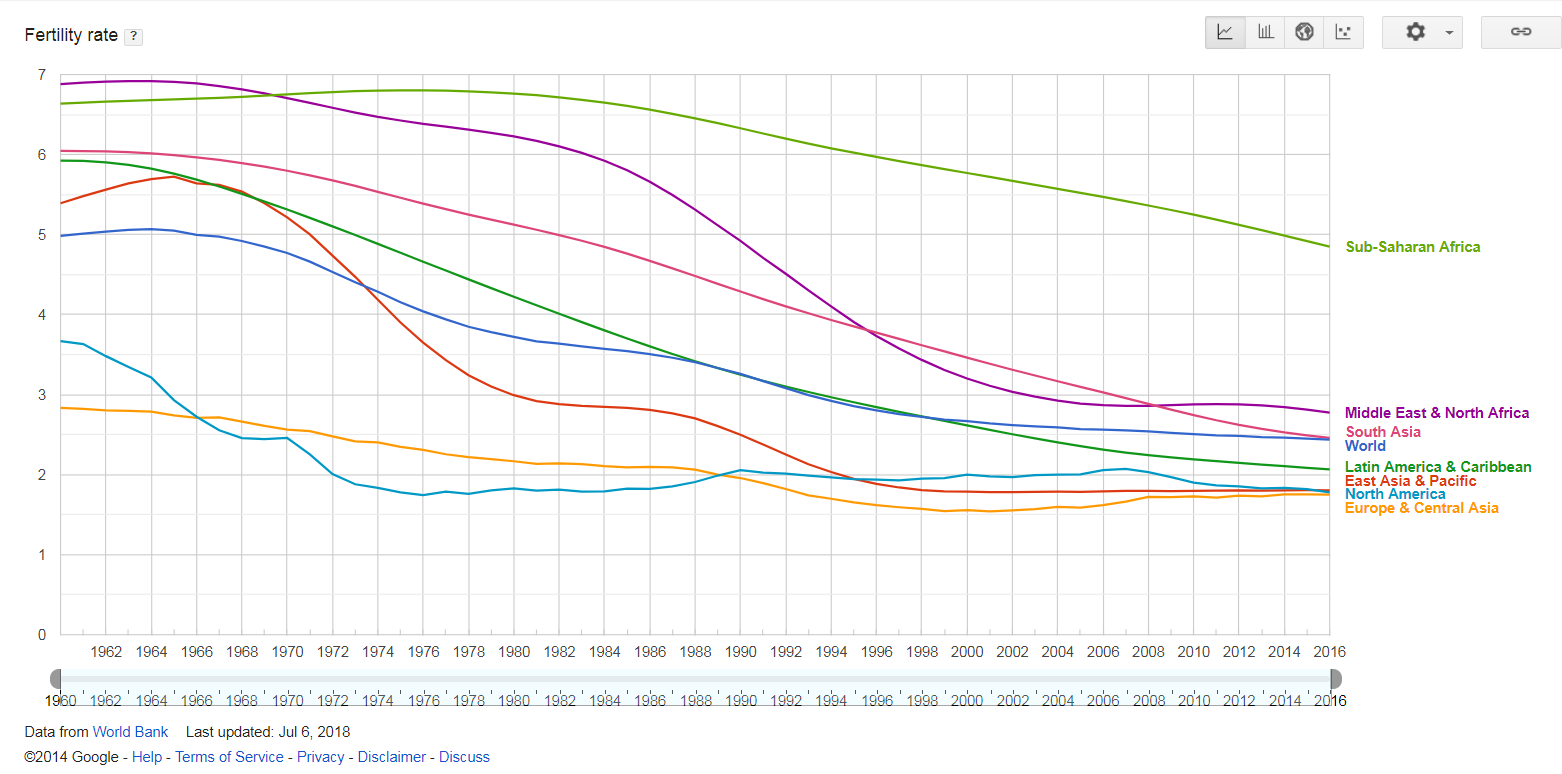Revolver must be doing something right because the entire woke communist regime and cancel culture apparatus is coming after us, night and day.
Join the Revolver family and our fight to save America with a $49 per year ad-free subscription. And if you want to give extra during this critical time, you can make a one-time or recurring monthly donation — whether it’s $1 or $1,000, every bit goes towards the battle to save our great nation. Or, give a friend or loved one a Revolver annual subscription simply by checking the “Gift” option.
Well, it looks as if the so-called experts were wrong again. This time they missed the mark on Africa’s birth rate.
According to recent data, the birth rate in Africa is falling at a much faster rate than experts predicted.
This shouldn’t come as a surprise to anybody, however. We’ve known for a while that the rates are going down.
This article is from March, 2021.
When compared with other continents, Africa’s fertility rates of 4.5 children per woman in 2017 seem high. Indeed, it’s the highest in the world. But that figure is low compared with Africa’s birthrates of previous decades. It stood at an average of 6.6 children per woman in 1980.
And these rates has been falling across the continent. In the Sahel, for example, the region with the highest fertility rates, the number of children per woman has dropped from 7 to 5.7 since 1980. The most spectacular drop has been in North Africa, where the rate was cut in half in 37 years, from 6 children per woman to 3.
There is an ongoing demographic transition in Southern Africa and the countries of the Indian Ocean, where the current fertility rate is 4 children per woman, and the rate is trending downward.
African population growth still remains much higher than the rest of the world.
However, the population growth has definitely slowed in Africa, and that is likely due to more women embracing birth control.
More and more women are using modern contraceptives. According to the latest Family Planning 2020 (FP2020) report, the number has increased by 66% since 2012 — from 40 million to more than 66 million women and girls.
When governments, UN agencies and private foundations launched the initiative eight years ago, they set an ambitious goal: to get 120 million more people in the world’s 69 lowest-income countries to use modern contraceptives by 2020.
However, even taking all of this into consideration, the experts still got it wrong. The Economist:
The UN’s population projections are widely seen as the most authoritative. Its latest report, published last year, contained considerably lower estimates for sub-Saharan Africa than those of a decade ago. For Nigeria, which has Africa’s biggest population numbering about 213m people, the un has reduced its forecast for 2060 by more than 100m people (down to around 429m). By 2100 it expects the country to have about 550m people, more than 350m fewer than it reckoned a decade ago.
Yet even the UN’s latest projections may not be keeping pace with the rapid decline in fertility rates (the average number of children that women are expected to have) that some striking recent studies show. Most remarkable is Nigeria, where a un-backed survey in 2021 found the fertility rate had fallen to 4.6 from 5.8 just five years earlier. This figure seems to be broadly confirmed by another survey, this time backed by usaid, America’s aid agency, which found a fertility rate of 4.8 in 2021, down from 6.1 in 2010. “Something is happening,” muses Argentina Matavel of the un Population Fund.
If these findings are correct they would suggest that birth rates are falling at a similar pace to those in some parts of Asia, when that region saw its own population growth rates slow sharply in a process often known as a demographic transition.
A similar trend seems to be emerging in parts of the Sahel, which still has some of Africa’s highest fertility rates, and coastal west Africa. In Mali, for instance, the fertility rate fell from 6.3 to a still high 5.7 in six years. Senegal’s, at 3.9 in 2021, equates to one fewer baby per woman than little over a decade ago. So too in the Gambia, where the rate plunged from 5.6 in 2013 to 4.4 in 2020, and Ghana, where it fell from 4.2 to 3.8 in just three years.
These declining birth rates are bringing West Africa much closer to southern Africa’s lower fertility rates.

However, many experts are cautioning people not to read too much into this – but that could be bruised egos talking. The trend is evident and as a result, several experts are reducing their projections.
In 1972 the Club of Rome, a think-tank, published an influential book, “The Limits to Growth”, warning that consumption and population growth would lead to economic collapse. Now it says the population bomb may never go off: it reckons sub-Saharan Africa’s population may peak as soon as 2060, which is 40 years earlier than the UN’s projections.
Family planning has not been very popular with local religious leaders, however that’s also been changing. Clerics are actually talking about planning families and that is likely another huge reason for the decline in birth rates.
SUPPORT REVOLVER NEWS — Donate HERE
Subscribe to ad-free and ditch the ads… just $49 per year or $5 per month…
NEWS FEED — GAB — GETTR — TRUTH SOCIAL — TWITTER




Join the Discussion